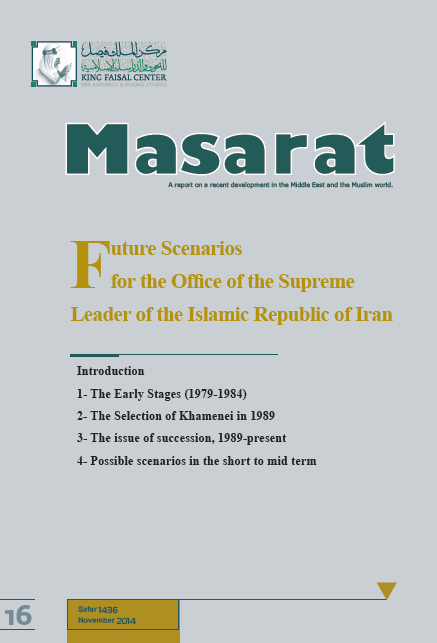Future Scenarios for the Office of the Supreme Leader of Iran
Issue 16. November 2014 (Safar 1436 H.)
Abstract:
The succession mechanisms and processes for the Supreme Leader post in the Islamic Republic have been one of the more contentious and nebulous elements in post-revolutionary Iran’s statecraft. A unique position, which is not immediately comparable to other “summit” institutions of modern state systems, such as the presidency of a republic, the helm of a monarchy, or the highest military rank in a junta, the Supreme Leader in Iran is effectively an irreplaceable institution. The death of the first incumbent of the post, Ayatollah Ruhollah Khomeini, in 1989, forced his successors to resort to a significant revision of the Constitution in order to accommodate and make possible the rise to power of his chosen replacement, Ali Khamenei, effectively creating a new institution which carried most, but not all, the prerogatives held by Khomeini. While the current Leader does not hold the immense charisma and stature of his predecessor, another constitutional revision is likely to be on the agenda once he relinquishes the post, most probably as a consequence of natural death. Another key element in this process is the attitude of the Islamic Republic’s elite towards the issue of succession. For a limited period of time during the 1980s, the political system featured a “faqih in waiting”, Ayatollah Montazeri, who was chosen by a specially-created institution, the Assembly of Experts, in 1984 on account of Khomeini’s advanced age and the need to be prepared for his possible demise. The progressive estrangement of Montazeri and his removal from office by Khomeini in 1988 has forestalled future similar appointments, none of which have occurred in the Khamenei era (1989-present). This also means that the mechanism which led to the selection of Khamenei provides useful insight into the possible steps which may occur during the process which will be conducive to the selection of the next Leader, as the general setting in which both appointments took and are to take place share considerable similarities. There will therefore be a focus on the 1989 events, prior to discussing the current state of play and possible scenarios moving forward.

